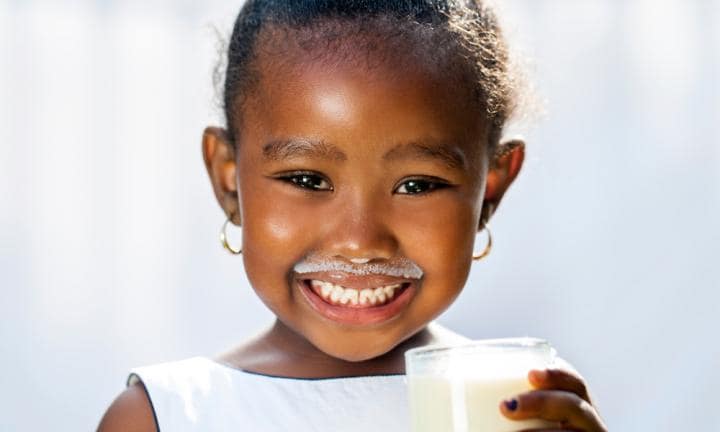Everything About Lactose Intolerance In Children: Causes, Symptoms & Treatment

Do you have a baby that is not growing well due to frequent diarrhoea? Be vigilant, it could be due to lactose intolerance.
What Is Lactose Intolerance?
Lactose intolerance (milk intolerance) happens when the body cannot break down or make use of a sugar called lactose, which is present in all milk, including breast milk, dairy (cow) milk and other dairy products. Lactose makes up around seven per cent of breast milk similar to the amount in infant formula and helps absorb calcium and iron.
Usually, the enzyme lactase, which is produced in the small intestine, changes the lactose to glucose and galactose – sugars that are more easily absorbed and helps to ensure healthy development.
READ ALSO: Baby Poo: A Guide For New Parents
Sometimes babies don’t produce enough lactase to break down all the lactose, so the unabsorbed lactose passes through the intestine undigested.
Undigested lactose irritates the intestine and causes a build-up of wind and diarrhea. Most children or adults who are diagnosed with lactose intolerance can digest small amounts of lactose which would not cause symptoms.
READ ALSO: Your Baby’s Gas Pain: Common Causes & What to Do
Causes
Lactose intolerance causes can be broadly grouped into two:
Primary Lactose Intolerance: This happens when babies are born without any lactase enzymes. This is genetically carried and extremely rare. Primary lactose intolerance is a medical emergency and the baby would need a special diet from soon after birth in order to grow well.
Secondary Lactose Intolerance: This can occur if a child’s digestive system is disrupted by illness affecting healthy production of enzymes like lactase, or if there is not enough lactase being produced.
Sometimes lactose intolerance is confused with other digestive problems, such as a food allergy. This is because these conditions have similar symptoms. Food allergy is not the same as lactose intolerance and does not affect a baby’s production of lactase.
Symptoms
The symptoms of Lactose intolerance are
- Pain
- Wind
- Swelling in the tummy
- Crankiness
- Failure to settle at feeding times
- Coming on and off the breast
- Not gaining weight
- Frothy green stools
- Diarrhoea
- Perianal excoriation (redness and peelings of the buttocks) and an irritable baby who may pass wind often. Lactose intolerance doesn’t cause vomiting, but a food allergy does.
READ ALSO: 4 Common Baby Tummy Troubles & When to Call the Doctor
Diagnosis
It is best to always seek professional opinion, one or two, and get informed diagnosis, instead of trying to read up symptoms and guess what the problem with your baby could be.
Hospital diagnosis rely on the following methods to make a proper diagnosis of Lactose intolerance in babies:
- Clinitest Tablet
- Hydrogen Breath Test
- Elimination Diet
- Stool PH/Stool Acidity Test
Treatment
The treatment for lactose intolerance can depend on the cause. Primary lactose intolerance is an emergency. It requires the attention of a doctor, pediatrician or nutritionist.
For secondary lactose intolerance caused by gastroenteritis, still see your child’s pediatrician for appropriate intervention.
You can also alternate baby’s breastfeeds with a lactose-free or soy-based infant formula that is readily available in Nigeria. For serious condition, the baby may be weaned onto the formula for a while.
Where there is redness, cuts or abrasions on the baby buttocks due to acidity of the lactose, a good topical cream can be prescribed for the baby to protect the skin.


